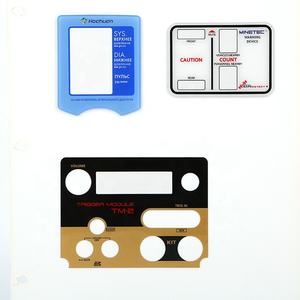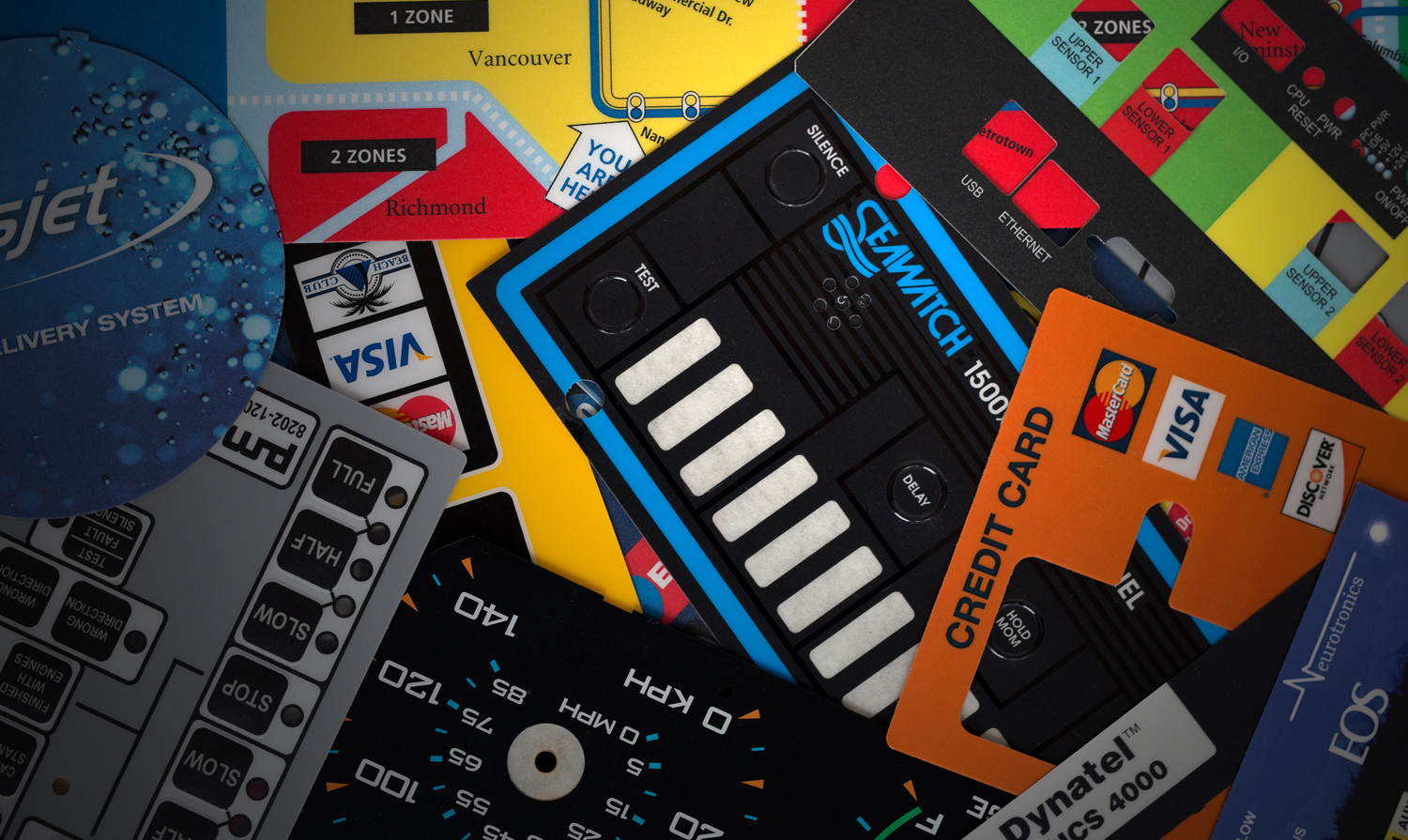Graphic Overlay and Panels-- Innovative Layout Solutions for Graphic Interfaces
A Comprehensive Overview to Picking Graphic Overlays and Panels
Selecting the appropriate visuals overlays and panels is a nuanced process that calls for cautious consideration of various variables, including material homes, printing strategies, and style components. The option between products such as polycarbonate, acrylic, and polyester can considerably influence both longevity and capability, while the alignment of printing approaches with aesthetic needs is similarly crucial. Understanding functionality and adherence to industry requirements can greatly improve the total efficiency of the item. Therefore, a thorough expedition of these parts is important to attaining optimal lead to visuals overlay option. What particular aspects should one prioritize when making these options?
Understanding Graphic Overlay Materials
Understanding the qualities of graphic overlay materials is important for making sure both performance and toughness in layout applications. These products function as safety layers that not only improve the aesthetic appeal of a product yet additionally perform critical roles in customer communication and gadget operation.
The most typical materials made use of in visuals overlays consist of polyester, polycarbonate, and acrylic. Polyester is understood for its outstanding resistance to moisture, chemicals, and UV light, making it suitable for exterior applications. Polycarbonate, on the various other hand, provides exceptional impact resistance, making it ideal for environments where physical longevity is extremely important. Polymer overlays offer clarity and are frequently chosen for their optical properties, though they might not use the very same degree of effect resistance as polycarbonate.
Furthermore, the thickness of the overlay can influence both tactile feedback and long life. Thicker overlays offer boosted durability however might minimize versatility, while thinner options can use even more complex style possibilities. Understanding these features allows designers to choose the appropriate materials that straighten with the particular demands of their projects, making sure optimal performance and long life of the graphic overlays in different applications.
Trick Printing Techniques
Commonly, the selection of printing methods is an essential element in the production of visuals overlays and panels, as it straight affects both the aesthetic quality and longevity of the final product. One of the most generally employed printing techniques include screen printing, electronic printing, and pad printing, each offering distinctive benefits.
Screen printing is favored for its ability to create lively shades and is specifically effective for large runs. It offers superb resilience against wear, making it optimal for overlays that will certainly experience constant usage. Digital printing, on the various other hand, permits for intricate designs and high-resolution images, making it suitable for custom-made or low-volume tasks. This strategy additionally uses fast turn-around times and versatility in color changes.
Pad printing is particularly useful for using graphics onto uneven surfaces, guaranteeing constant high quality across diverse forms. This method is frequently picked for its precision and capability to print fine details.
Ultimately, the choice of printing method ought to straighten with the particular practical needs and aesthetic objectives of the visuals overlay or panel, ensuring that the end product fulfills both visual and performance standards.
Design Considerations
When selecting visuals overlays and panels, style considerations play an essential role in ensuring that the last product not only meets functional demands however additionally lines up with branding and user experience goals. The visual components, consisting of color design, typography, and imagery, must show the brand name identity and resonate with the target market. Graphic Overlay and Panels. A cohesive style enhances recognition and sustains brand loyalty
In addition, the design needs to prioritize simplicity of navigating, guaranteeing that vital information is quickly obtainable. This includes calculated placement of buttons, symbols, and Continue message to facilitate individual communication. The selection of materials likewise affects layout; as an example, a matte surface might lower glare, while a glossy surface can improve vibrancy.
Furthermore, the general measurements and form of the overlay need to consider the designated application and gadget compatibility - Graphic Overlay and Panels. Personalized forms may offer a special visual, yet they must not jeopardize performance
Use and Capability
Usability and functionality are important facets that determine the effectiveness of graphic overlays and panels in real-world applications. The primary goal of these aspects is to improve individual communication while making sure that necessary details is conveniently obtainable. A properly designed visuals overlay address needs to promote instinctive navigating and advertise reliable procedure of the tool or user interface it goes along with.
When picking a graphic overlay, think about the format and the arrangement of controls. The style needs to prioritize often made use of functions, putting them within very easy reach. Additionally, clear labeling with suitable symbols or message is important for fast acknowledgment and understanding. Color contrasts and tactile responses can even more boost usability, assisting individuals to identify in between different functions and guaranteeing a smooth functional experience.
Functionality additionally reaches the overlay's resilience and resistance to ecological elements. A robust visuals overlay must withstand wear and tear, including exposure to chemicals, moisture, and temperature variations, without compromising its legibility or responsive homes. As a result, examining both use and performance during the choice process is important for ensuring that the graphic overlay or panel fulfills the details requirements of the application while offering a positive user experience.
Compliance and Criteria
Picking visuals overlays and panels needs attention not just to use and performance but also to conformity with market standards and regulations. Making certain that read your overlays satisfy these requirements is crucial for item efficiency, security, and market acceptance.
Various industries have details guidelines that have to be abided by. Clinical devices are subject to the FDA's guidelines, while auto applications should abide with ISO requirements. Understanding these demands early in the layout process will decrease the danger of pricey modifications or hold-ups.
Material choice is also crucial for compliance; certain chemicals and materials may be limited or need certification. Overlays used in food-related applications should fulfill FDA criteria for food contact materials, ensuring they do not seep unsafe substances. Additionally, electromagnetic compatibility (EMC) requirements might use, specifically in electronic devices, requiring cautious factor to consider of materials and design to stop disturbance.
Including conformity checks throughout the layout and production process not just safeguards your item yet also enhances its reputation in the industry. Therefore, familiarity with relevant standards is important for any type of organization involved in the creation of graphic overlays and panels.

Conclusion
In final thought, picking graphic overlays and panels requires mindful consideration of material buildings, printing methods, and layout components. An extensive understanding of these aspects facilitates notified decision-making, eventually leading to effective layout outcomes in graphic overlays and panels.

When choosing graphic overlays and panels, design considerations play a crucial duty in making sure that the final product not just satisfies practical requirements yet likewise lines up with branding and user experience purposes.In final thought, choosing visuals overlays and panels requires careful factor to consider of product properties, publishing strategies, and design aspects. A detailed understanding of these variables promotes notified decision-making, ultimately leading to effective design end results in graphic overlays and panels.